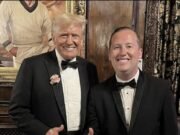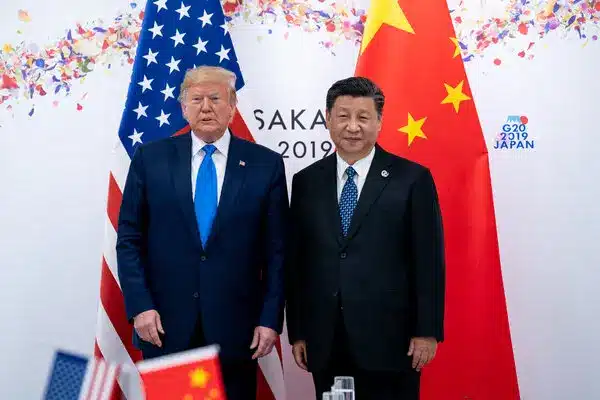When Donald Trump returned to the White House in January 2025, Chinese policymakers braced for the worst. Memories of the U.S.-China trade war during Trump’s first term still haunted Beijing, especially as China faced a sluggish economy and deep vulnerabilities from global trade interdependence. Many Chinese intellectual elites warned of an “unprecedented storm” that could devastate bilateral relations.
Yet six months later, the picture looks different. Instead of being weakened, China’s leaders feel emboldened. They now believe they hold stronger trade leverage over the United States than ever before. Surprisingly, Beijing views Trump—obsessed with trade deficits but pragmatic—as easier to deal with than the ideological China hawks of his first administration.
Chinese officials are now pushing for a Trump–Xi summit this fall to ease tensions. While they recognize that long-term U.S.-China competition is unavoidable, they see short-term trade agreements as a way to buy time, reduce vulnerabilities, and avoid military confrontation.
From Tariff Escalation to Negotiation
Trump’s early months confirmed Beijing’s fears. In February and March 2025, Washington imposed two rounds of ten percent tariffs on Chinese exports, citing fentanyl concerns. China retaliated in April, leading Trump to slap an additional 125 percent tariff, pushing the average U.S. tariff rate on Chinese goods to nearly 150 percent.
Observers expected China’s economy to buckle under pressure. Instead, it was Washington that showed signs of strain. By May, the U.S. pushed for talks in Geneva, resulting in a partial de-escalation. A June phone call between Trump and Xi Jinping confirmed that both sides were open to negotiation. To Beijing’s surprise, it was the United States that blinked first.
Why China Now Says “So What?”
Chinese policymakers concluded that America’s economy is less resilient to trade shocks than China’s. U.S. consumers and industries quickly felt the pain of supply shortages, while China could control domestic opinion and absorb the blow.
China also weaponized its dominance over rare earth elements, halting exports of critical minerals in April. This disrupted U.S. manufacturing of cars, airplanes, and defense products. Although Beijing agreed in May to resume shipments, it delayed compliance after Washington tightened restrictions on Huawei and Chinese AI firms. Rare earths have now become China’s first true strategic chokepoint against the United States.
Meanwhile, Beijing’s decade-long effort to diversify trade paid off. By late 2024, China traded more with the EU and ASEAN than with the U.S., while widespread transshipment helped Chinese goods bypass direct sanctions. With these buffers, Chinese elites now shrug off Washington’s threats: “There is a trade war. So what?”
Negotiating With Trump Directly
This time around, Beijing believes its best strategy is to negotiate with Trump personally rather than his team. Unlike in his first term, where hardline officials dominated, Trump’s new administration—including Secretary of State Marco Rubio—has avoided ideological attacks on the Chinese Communist Party.
Trump has also reduced U.S. support for Taiwan, imposing tariffs on Taipei and blocking its president from high-profile U.S. stopovers. This pragmatic, transactional approach is exactly what Beijing hoped for back in 2016: a businessman focused on deals, not politics.
China is therefore eager to host Trump in Beijing, framing the visit as a symbol of equality. Leaders want to test whether Trump is open to a “grand bargain” that might ease political tensions while granting Beijing more time to strengthen its position.
Short-Term Gains, Long-Term Uncertainty
Despite newfound confidence, Chinese elites remain cautious. They suspect that once trade disputes cool, Washington may pivot back to political and security issues, from Taiwan to human rights to attempts to weaken Communist Party control.
For now, Beijing’s strategy is to prolong negotiations, secure small wins, and tie Trump’s hands with ongoing talks. Chinese officials may also include rescision clauses in agreements, allowing them to retaliate if Washington shifts its focus back to politics.
Still, they know Trump is unpredictable. A deal today could collapse tomorrow, reigniting hostility. For Beijing, trade is manageable—but if relations return to politics and ideology, the rivalry could spiral out of control.
Conclusion
Six months into Trump’s second presidency, U.S.-China trade relations have taken an unexpected turn. Far from being cornered, Beijing feels stronger and more capable of shaping negotiations. Rare earths, supply chain diversification, and transshipment have given China confidence.
Yet beneath the optimism lies caution. Chinese leaders believe a downturn is inevitable and are preparing for the next confrontation. A temporary trade truce may offer relief—but it cannot erase the deep and enduring strategic rivalry between Washington and Beijing.








































